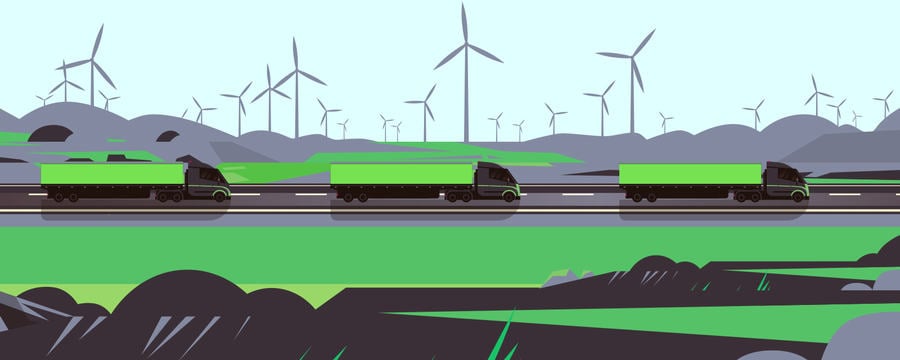Sustainable Development Goals
Having looked at the concept of sustainable development, you will be introduced to the 2030 UN Agenda for Sustainable Development and learn how countries and businesses can develop and evaluate their sustainability programmes using the UN Sustainable Development Goals.
There is no ‘Plan B’ because we do not have a ‘Planet B.’ We have to work and galvanize our action.(Ban Ki-moon, former Secretary-General of the United Nations)
The 2030 Agenda for Sustainable Development
This is an additional video, hosted on YouTube.
The 17 goals
| Sustainable development goal | Description |
| Goal 1: Poverty | End poverty in all its forms everywhere |
| Goal 2: Zero hunger | End hunger, achieve food security and improved nutrition and promote sustainable agriculture |
| Goal 3: Good health and wellbeing | Ensure healthy lives and promote wellbeing for all at all ages |
| Goal 4: Quality education | Ensure inclusive and equitable quality education and promote lifelong learning opportunities for all |
| Goal 5: Gender equality | Achieve gender equality and empower all women and girls |
| Goal 6: Clean water and sanitation | Ensure availability and sustainable management of water and sanitation for all |
| Goal 7: Affordable and clean energy | Ensure access to affordable, reliable, sustainable and modern energy for all |
| Goal 8: Decent work and economic growth | Promote sustained, inclusive and sustainable economic growth, full and productive employment and decent work for all |
| Goal 9: Industry, innovation and infrastructure | Build resilient infrastructure, promote inclusive and sustainable industrialization and foster innovation |
| Goal 10: Reduced inequalities | Reduce inequality within and among countries |
| Goal 11: Sustainable cities and communities | Make cities and human settlements inclusive, safe, resilient and sustainable |
| Goal 12: Responsible consumption and production | Ensure sustainable consumption and production patterns |
| Goal 13: Climate action | Take urgent action to combat climate change and its impacts |
| Goal 14: Life below water | Conserve and sustainably use the oceans, seas and marine resources for sustainable development |
| Goal 15: Life on land | Protect, restore and promote sustainable use of terrestrial ecosystems, sustainably manage forests, combat desertification, and halt and reverse land degradation and halt biodiversity loss |
| Goal 16: Peace, justice and strong institutions | Promote peaceful and inclusive societies for sustainable development, provide access to justice for all and build effective, accountable and inclusive institutions at all levels |
| Goal 17: Partnerships for the goals | Strengthen the means of implementation and revitalise the global partnership for sustainable development |
Sustainable Development Goals (SDGs) indicators
Voluntary National Reviews (VNRs)
…conduct regular and inclusive reviews of progress at the national and sub-national levels.(United Nations 2015)
Your task
Select three out of the 17 Sustainable Development Goals included in the ‘2030 Agenda for Sustainable Development’ to which you would like to contribute through your own actions in your daily life.How can you achieve these goals? What challenges do you expect to face and how do you plan to overcome them?Share your thoughts with your fellow students in the comments section below.
References
Ritchie, H. (2018) ‘Introducing Our New and Improved ‘Sustainable Development Goal (SDG) Tracker’. Our World in Data [online]. available from https://ourworldindata.org/sdg-tracker-update [8 July 2019]
United Nations (2015) ‘Transforming Our World: The 2030 Agenda for Sustainable Development’ [A/RES/70/1]. Resolution adopted by the General Assembly held 25 September 2015. New York: United Nations, 35 [online]. available from: https://sustainabledevelopment.un.org/post2015/transformingourworld [8 July 2019]
UNDP-MDGs (2015) ‘Millennium Development Goals (MDGs)’. United Nations Development Programme (UNDP) [online]. New York: United Nations [online]. available from: https://www.undp.org/content/undp/en/home/sdgoverview/mdg_goals.html [8 July 2019]
UNDP-SDGs (2019) ‘Sustainable Development Goals (SDGs)’. United Nations Development Programme (UNDP) [online]. available from https://www.undp.org/content/undp/en/home/sustainable-development-goals.html [8 July 2019]
UNSTATS-SDGs (2018) ‘The Sustainable Development Goals Report: An Overview’. Statistics Division. Department of Economic and Social Affairs [online]. available from https://unstats.un.org/sdgs/report/2018/overview/ [9 July 2019]
UNSTATS-IAEG-SDGs (2019) ‘Sustainable Development Goal Indicators Website’. Statistics Division. Department of Economic and Social Affairs [online]. available from https://unstats.un.org/sdgs/ [9 July 2019]
UN-VNRS (2019) ‘Voluntary National Reviews (VNRs)’. High-level Political Forum on Sustainable Development, United Nations [online]. available from https://sustainabledevelopment.un.org/vnrs/ [8 July 2019]
Further reading
United Nations (2019) ‘About the Sustainable Development Goals’. United Nations – Sustainable Development Goals [online]. available from https://www.un.org/sustainabledevelopment/sustainable-development-goals/ [8 July 2019]
Share this
Sustainability and Green Logistics: An Introduction

Sustainability and Green Logistics: An Introduction


Reach your personal and professional goals
Unlock access to hundreds of expert online courses and degrees from top universities and educators to gain accredited qualifications and professional CV-building certificates.
Join over 18 million learners to launch, switch or build upon your career, all at your own pace, across a wide range of topic areas.
Register to receive updates
-
Create an account to receive our newsletter, course recommendations and promotions.
Register for free







